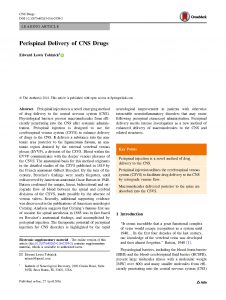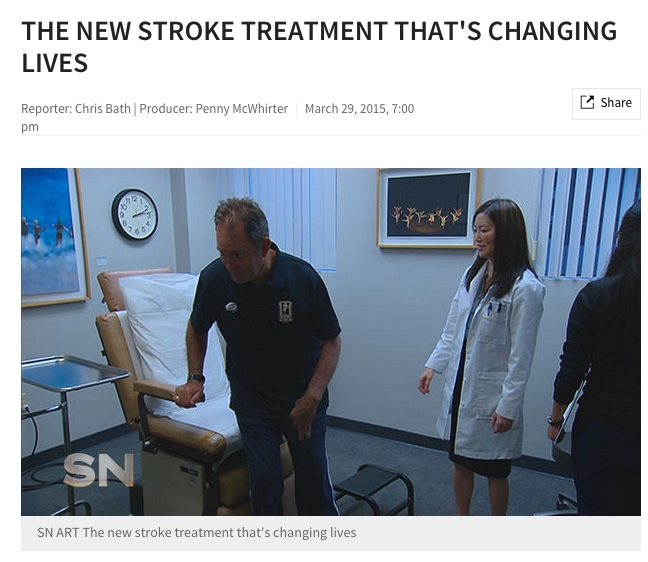Improvement in hand function, walking, and cognition after treatment at the INR 7 months after stroke.
Disclaimer: Individual results vary, not all patients respond. Additional doses may be necessary to maintain the clinical response. Treatment for these indications is innovative (“off-label”). Please see the Terms of Use. The method of off-label treatment utilized is a patented invention of the INR.


 May 2, 2016 (Los Angeles, Boca Raton): On April 27, 2016, the peer-reviewed review article entitled, Perispinal Delivery of CNS Drugs, by Edward Tobinick MD, published online in the scientific journal CNS Drugs. The article published in print in the June issue of the journal. The abstract of the article states:
May 2, 2016 (Los Angeles, Boca Raton): On April 27, 2016, the peer-reviewed review article entitled, Perispinal Delivery of CNS Drugs, by Edward Tobinick MD, published online in the scientific journal CNS Drugs. The article published in print in the June issue of the journal. The abstract of the article states:
